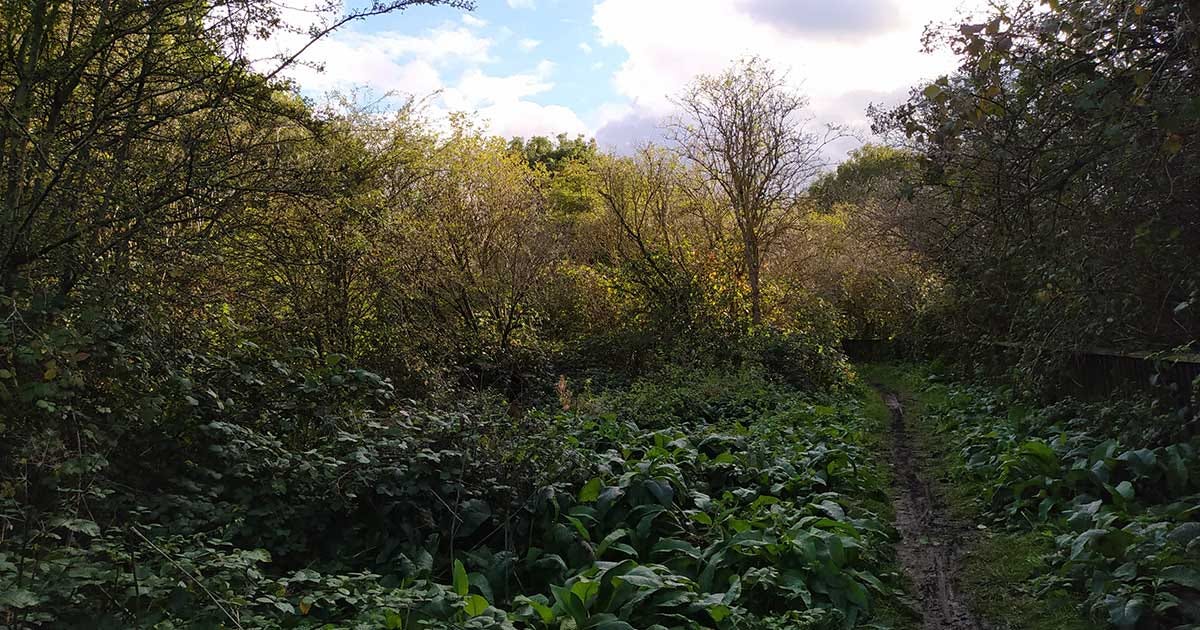You gotta crack a few eggs
to make a wildflower meadow.
There’s a community nature park in our neighbourhood.
It used to look like this.
Now it looks like this.
But hear me out.
This is a project that has been fascinating to follow. This little patch of land known as The Paddock is an eight-acre triangle wedged between a river, a canal, and a busy main road. It’s a diverse mixture of scrub woodland and grassland and it’s absolutely packed with birds and insects. I’ve spent many hours now wandering the sunny paths spotting jays, woodpeckers and long-tailed tits. The largely unmanaged comfrey was practically vibrating with bees last summer.
It opened as a nature reserve about 20 years ago, home to bats, hedgehogs, moths and weasels, but only in the last couple of years have The Conservation Volunteers - a UK conservation group - been working in it. Until then it was a grassy, woody area that had a moderate issue with anti-social behaviour and a huge issue with fly-tipping.
When we moved into the area a couple of years ago the main thing we noticed was the fly-tipping. Bags upon bags of waste piled up over the years, a combination of homeless camps and several decades of lazy dumping.
When TCV started work, they cleared out a lot of surface waste. But it quickly became clear that the site had naturally regenerated itself on top of a lot more, so the area was a strange mix of mossy woodland growing around abandoned tyres and suitcases.
But this lack of human care had also resulted in something else: Japanese knotweed.
Japanese knotweed is an intensely invasive species that smothers pretty much everything it comes into contact with, out-competing all the native flora. If nothing is done, it would eventually consume the entire area, making it impossible for anything else to thrive.
The local council in association with TCV announced a plan to revitalise the area. It identified the Japanese knotweed that needed to be removed, but the unfortunate side effect meant ear-marking dozens of poor quality trees for removal.
The work began, and when I saw the scope of what was involved to say I was shocked would be an understatement. This wonderful hidden oasis of greenery in North London where I had watched redwings and egrets was being almost entirely demolished.
During the works, the contractors uncovered far more knotweed and fly-tipping than anyone realised was on the site.
With each area of Knotweed that was excavated, tonnes of historic fly-tipping and dumped building waste was discovered, making the task of burying the Knotweed rhizomes more complicated. The contractors discovered enough dumped vehicle parts to re-build a car! 30 tonnes of rubbish in total!
But just because something is grown, green and wild doesn’t mean it’s healthy. A good quality ecosystem includes a balanced mix of species that work together to sustain it. Infestation of Japanese knotweed is not part of a healthy British ecosystem. Nor is 30 tonnes of plastic.
The plan is for TCV to plant dozens more trees where the diseased trees were removed, and plant a wildflower meadow in the open space. Wildflower meadows are an incredibly rare habitat in the UK, and the ecological benefits and carbon sequestration of wildflower meadows outweighs what the Paddock was achieving in its previous state.
As difficult as it is to see the woods torn down and the ground excavated, I appreciate the efforts going to build new, more valuable habitats. It could have been much worse. A less aware authority would have turned it into a block of flats, a car park, or a flat lawn with a children’s play area.
Instead, this plan is about preservation, rejuvenation, and increasing people’s access to and enjoyment of nature and wildlife.
And that’s an ambition to cling tightly to.







